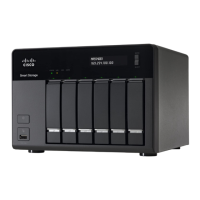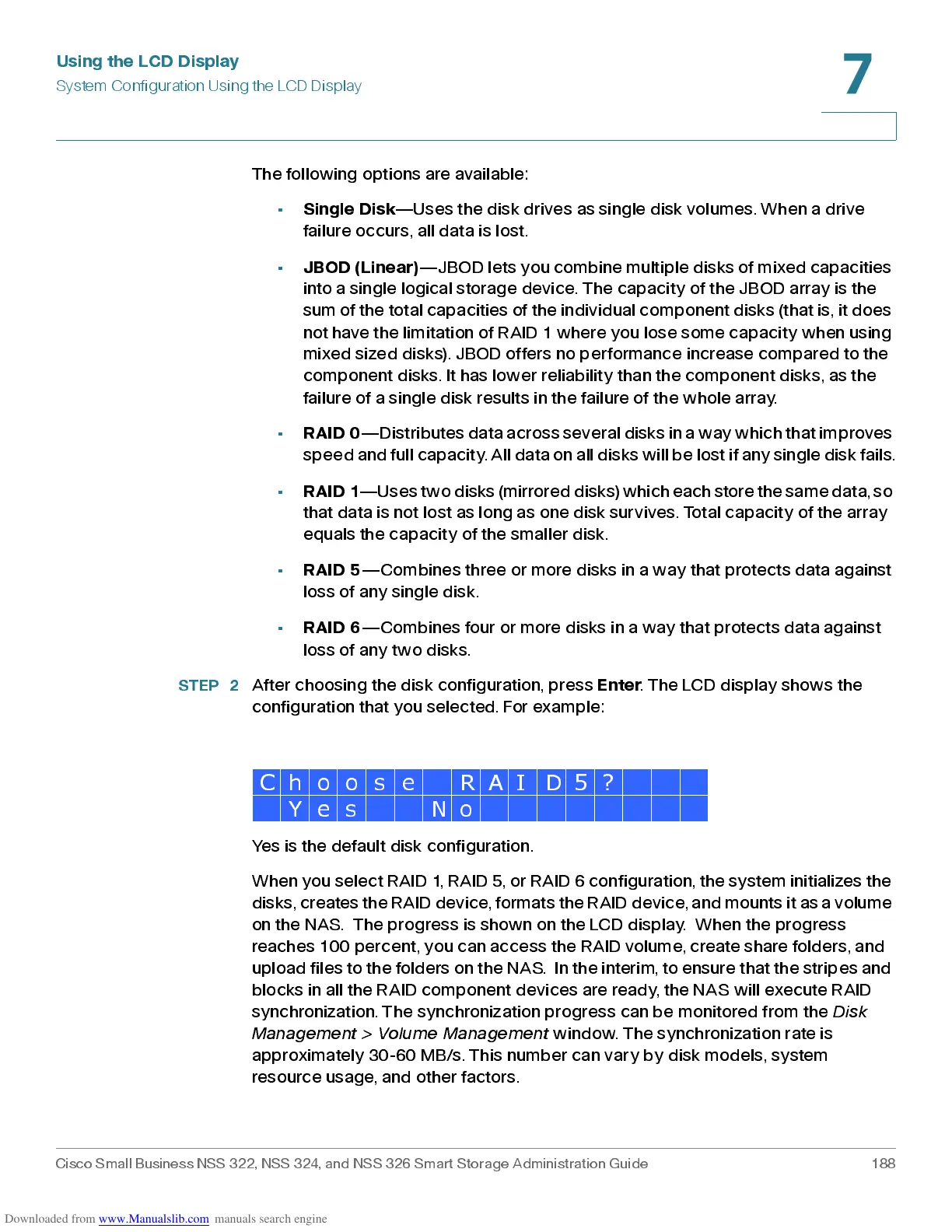Using the LCD Display
System Configuration Using the LCD Display
Cisco Small Business NSS 322, NSS 324, and NSS 326 Smart Storage Administration Guide 188
7
The following options are available:
•
Single Dis k
—Uses the disk drives as single disk volumes. When a drive
failure occurs, all data is lost.
•
JBOD (Linear)
—JBOD lets you combine multiple disks of mixed capacities
into a single logical storage device. The capacity of the JBOD array is the
sum of the total capacities of the individual component disks (that is, it does
not have the limitation of RAID 1 where you lose some capacity when using
mixed sized dis k s). JBOD offers no performanc e increas e c ompa red to the
component disks. It has lower relia bility t han the co mponent disks, as the
failure of a single disk results in the failure of the whole array.
•
RAID 0
—Di str ibu t es d ata acr oss se ver al d is ks in a wa y whi ch t hat imp r ove s
speed and full capacity. All data on all disks will be lost if any single disk f ails.
•
RAID 1
—Use s two di sks (m irrored disks) which each store the same data, so
that data is not lost as long as one disk surviv es. Total capa cit y of the array
equals the capa cit y of the smaller dis k.
•
RAID 5
—Combines three or more disks in a way that protects data against
loss of any single disk.
•
RAID 6
—Com bine s four or more disks in a way that protects data again st
loss of any two disks.
STEP 2
After choosing the disk configuration, press
Enter
. The LCD display shows the
configuration that you selected. For example:
Yes is the default disk configura tion.
When you select RAID 1, RAID 5, or RAID 6 configuration, the system initializes the
disks, creates the RAID device, f ormats the RAID device, and mounts it as a vol ume
on the NAS. The progress is shown o n the LCD display. When the progress
reaches 100 percent , you can access the RAID volume, create share folders, and
upload files to the folders on the NAS. In the interim, to ensure t hat the stripes and
blocks in all the RAID component devices are ready, the NAS will execute RAID
synchronization. The synchronization progress can be monitored from the
Disk
Management > Volume Management
window. The synchronization rate is
approximately 30-60 MB/s . This number can var y by disk models , system
resource usage, and other factors.
C h o o s e R A I D 5 ?
Y e s N o

